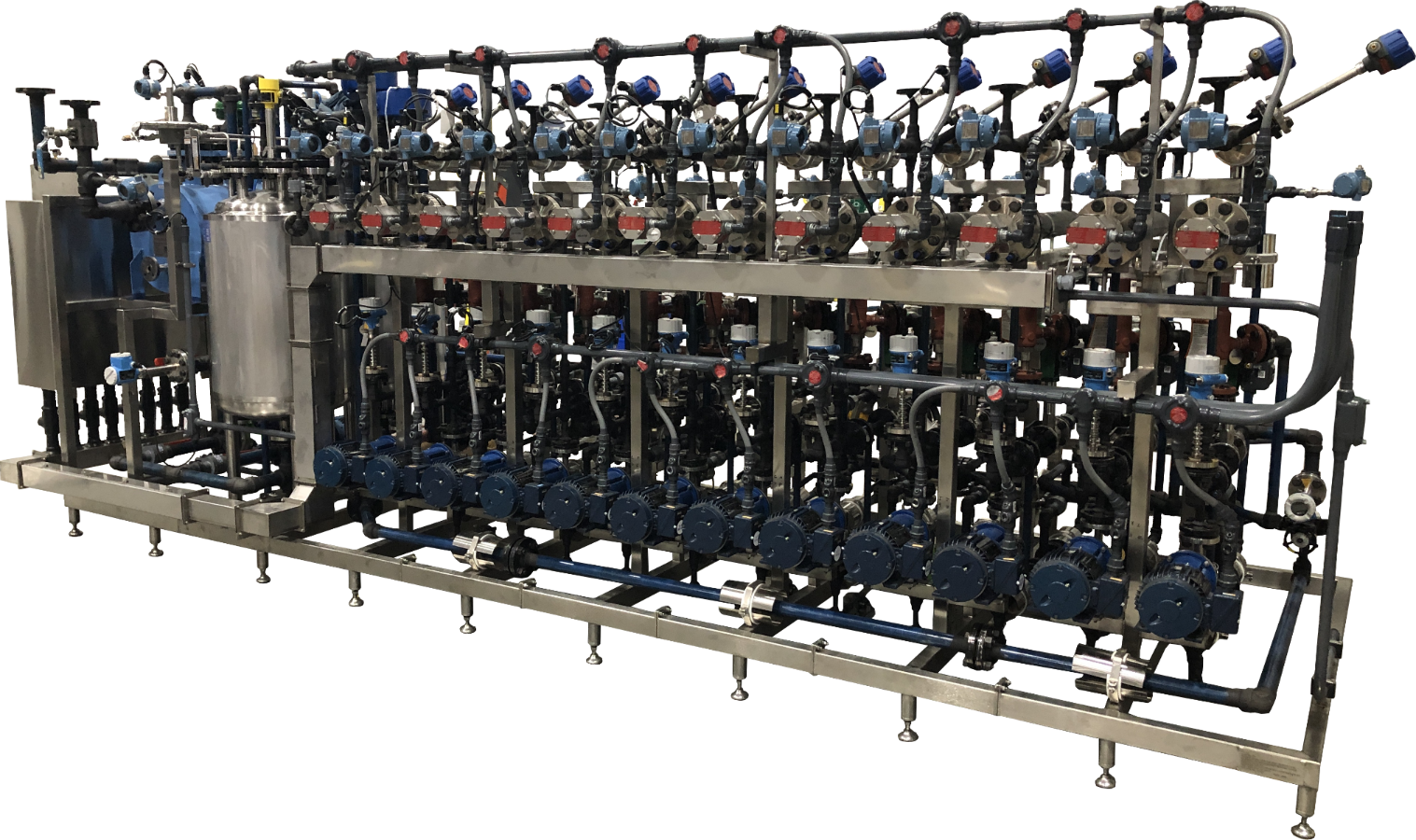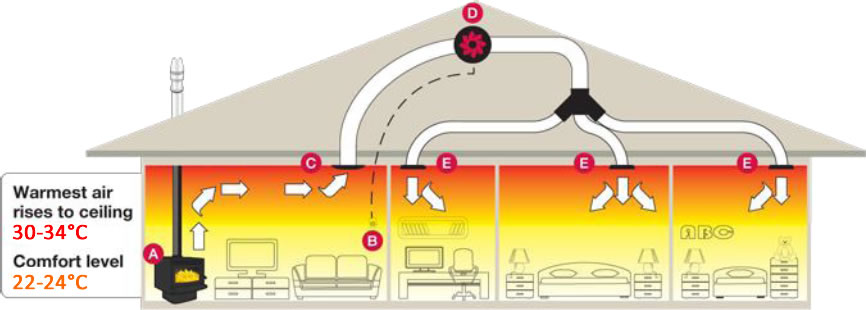How DVS Heat Transfer Systems Are Driving Sustainability Trends in Thermal Engineering
A Comprehensive Guide to Picking the Right Heat Transfer Equipments for Your Requirements
Selecting the proper Heat transfer system is important for operational efficiency. Various systems deal with different demands, affected by factors such as temperature variety and fluid kind. Comprehending the principles behind Heat transfer, such as radiation, convection, and conduction, is critical. Furthermore, reviewing energy resources and maintenance techniques can influence long-lasting efficiency. A closer assessment of these factors to consider discloses how to customize a system to particular needs. What should one prioritize in this complex decision-making process?
Understanding Heat Transfer: Key Concepts and Concepts
Heat transfer might appear like a straightforward concept, it incorporates a range of concepts that are basic for reliable system design - DVS Heat Transfer Systems. Understanding these concepts is vital for designers and developers who aim to enhance thermal performance in various applications. Conduction, for example, entails the transfer of Heat via solid materials, while convection refers to the movement of Heat within fluids. Radiation, one more crucial concept, explains exactly how Heat can be transferred through electromagnetic waves. Each of these devices plays an essential role in establishing just how power relocates within a system. By thoroughly realizing these concepts, specialists can make educated choices, ensuring that Heat transfer systems run successfully and meet the certain demands of their applications
Types of Heat Transfer Equipments: An Overview
Recognizing the concepts of Heat transfer prepares for exploring the various kinds of Heat transfer systems available. Heat transfer systems can be classified mostly right into 3 types: convection, radiation, and conduction. Transmission includes Heat transfer via strong materials, counting on straight call between particles. Convection, on the other hand, happens in fluids (liquids and gases) where the movement of the fluid itself promotes Heat transfer. Radiation involves the transfer of Heat via electromagnetic waves and does not require a medium, allowing it to occur in a vacuum cleaner. Each sort of system has distinct characteristics and applications, making it vital for people and companies to very carefully evaluate their particular demands when choosing the most suitable Heat transfer option.
Applications of Heat Transfer Equipments in Numerous Industries
Heat transfer systems play a vital duty throughout various markets, impacting effectiveness and item quality. In commercial manufacturing procedures, they facilitate exact temperature control, while in food and beverage processing, they ensure safety and security and preservation. Furthermore, a/c and climate control systems count heavily on effective Heat transfer to maintain comfortable atmospheres.
Industrial Production Processes

Countless industrial production procedures count heavily on reliable Heat transfer systems to take full advantage of productivity and improve product high quality. In sectors such as metalworking, Heat exchangers play an essential role in preserving perfect temperatures throughout welding, casting, and forging. These systems ensure consistent Heat distribution, which is important for accomplishing preferred product residential properties. In the chemical production market, Heat transfer systems help with accurate temperature control during reactions, affecting return and security. In textile production, reliable Heat monitoring is crucial for dyeing and completing processes, affecting color consistency and textile quality. By selecting appropriate Heat transfer modern technologies, manufacturers can improve power effectiveness and reduce operational prices, eventually leading to a more affordable and sustainable manufacturing atmosphere.
Food and Drink Processing
Reliable Heat transfer systems are equally essential in the food and beverage processing sector, where preserving optimal temperatures is vital for food security and top quality. These systems play an essential function in processes such as cooking, pasteurization, and sanitation, ensuring that products are risk-free for usage and preserve their dietary worth. Heat exchangers, for circumstances, efficiently move Heat in between liquids, enhancing energy use while reducing temperature variations. Furthermore, refrigeration systems are fundamental for preserving disposable items and prolonging rack life. The selection of Heat transfer technology directly influences operational efficiency and product stability, making it imperative for food and beverage makers to pick the appropriate systems customized to their particular processing requirements. This careful choice eventually contributes to consumer contentment and food security.

A/c and Environment Control
While lots of sectors depend on Heat transfer systems for efficiency, A/C (Home Heating, Air Flow, and A/c) plays an important role in keeping interior environment control throughout various setups. These systems make use of Heat transfer principles to manage temperature, air, and moisture top quality, guaranteeing convenience and safety and security in residential, industrial, and industrial settings. Effectively made cooling and heating systems enhance power efficiency, decrease operational expenses, and decrease ecological effect. In business structures, for instance, effective environment control adds to staff member efficiency and customer fulfillment. In commercial applications, cooling and heating systems assist keep optimal problems for devices operation and product conservation. Choosing the appropriate Heat transfer system is vital for meeting certain environment control needs and achieving total system efficiency.
Assessing Power Sources for Heat Transfer Systems
In examining energy sources for Heat transfer systems, a contrast of renewable power alternatives and fossil gas considerations is important. Sustainable resources, such as solar and wind, deal lasting choices that can minimize environmental impact. Conversely, fossil fuels continue to be common because of their established framework and energy density, motivating a cautious assessment of both options.
Renewable Resource Options

Nonrenewable Fuel Source Considerations
Examining fossil fuel factors to consider is crucial for the performance and sustainability of Heat transfer systems. Nonrenewable fuel sources, such as gas, oil, and coal, are typical power sources that supply significant Heat output, making them popular choices for residential and industrial applications. However, their environmental impact, consisting of greenhouse gas discharges and source exhaustion, elevates concerns. When picking a heat transfer system, it is vital to evaluate the schedule, cost, and regulatory aspects connected with these gas. Additionally, the effectiveness of nonrenewable fuel source systems must be taken into consideration, as higher performance can mitigate some environmental downsides. Inevitably, a well balanced technique weighing performance and sustainability can direct decision-makers toward the most suitable Heat transfer remedy for their specific requirements.
Variables to Consider When Choosing a Heat Transfer System
Selecting a suitable Heat transfer system needs careful consideration of different aspects that can significantly influence efficiency and performance. One important aspect is the operating temperature level variety, which dictates the products and style suitable for the application. Additionally, the kind of liquid used in the system-- whether gas or fluid-- affects Heat transfer effectiveness and compatibility. The system's size and capacity should align with the specific needs of the procedure to avoid inadequacies. Power resource accessibility is likewise essential, influencing operating costs and sustainability. The installation atmosphere, consisting of room constraints and accessibility for maintenance, plays a significant function check my source in system option. Ultimately, regulatory compliance and safety and security requirements should be thought about to guarantee the system fulfills all legal needs.
Maintenance and Performance Optimization for Heat Transfer Systems
Keeping Heat transfer systems is necessary for ensuring optimal performance and longevity. Normal maintenance tasks, such as cleaning Heat exchangers and examining insulation, aid stop efficiency losses due to fouling and thermal connecting. In addition, keeping track of system criteria, consisting of pressure and temperature level, permits for early discovery of abnormalities, reducing downtime and pricey fixings. Carrying out a preventive upkeep timetable can maximize efficiency and prolong the life-span of elements. Upgrading to sophisticated control systems can enhance operational performance by adjusting to differing problems and tons. By prioritizing maintenance and efficiency optimization, drivers can attain lowered power intake, reduced operational prices, and enhanced overall system reliability, inevitably bring about better resource use and an extra sustainable operation.
Future Fads in Heat Transfer Technologies
As industries increasingly prioritize sustainability and power efficiency, future fads in Heat transfer innovations are readied to undergo considerable improvements. Innovations such as innovative products, consisting of carbon nanotubes and nanofluids, guarantee boosted thermal conductivity and efficiency. Additionally, the integration of renewable power sources right into Heat transfer systems is obtaining energy, promoting environmentally friendly remedies. Smart technologies, including IoT sensing units, are anticipated to revolutionize surveillance and control, enabling real-time information analysis for optimized efficiency. The advancement of modular and compact systems will facilitate simpler installation and upkeep, providing to varied applications. These developments indicate a change in the direction of even more lasting, effective, and here versatile Heat transfer solutions, straightening with global power objectives and ecological requirements.
Often Asked Questions
What Are the Environmental Effects of Heat Transfer Systems?
The environmental effects of Heat transfer systems can include greenhouse gas discharges, power usage, and prospective thermal pollution. In addition, improper disposal of products and inefficiencies can add to resource deficiency and environment disruption.
Just how Do I Determine the Cost-Effectiveness of a Heat Transfer System?
To calculate the cost-effectiveness of a warm transfer system, one should evaluate first costs, operational costs, maintenance needs, and power efficiency, contrasting these factors versus the anticipated life-span and performance of the system.
Can Heat Transfer Equipment Be Made Use Of in Residential Setups?
Heat transfer systems can undoubtedly be utilized in property settings. They supply reliable heating and cooling down services, making homes much more you could try this out comfortable while possibly reducing energy costs. Their flexibility permits various applications in household atmospheres.
What Safety Regulations Apply to Heat Transfer Systems?
Safety regulations for Heat transfer systems typically include guidelines on installation, upkeep, and procedure. Conformity with regional building regulations, maker requirements, and industry standards is important to assure efficient and safe system performance in different applications.
Exactly How Do Different Materials Affect Heat Transfer Effectiveness?

Conduction, for instance, entails the transfer of Heat through strong materials, while convection refers to the activity of Heat within fluids. Recognizing the principles of Heat transfer lays the foundation for discovering the different kinds of Heat transfer systems offered. Heat exchangers, for circumstances, successfully move Heat between fluids, enhancing power use while reducing temperature level variations. In assessing energy resources for Heat transfer systems, a contrast of sustainable energy choices and fossil gas factors to consider is vital. Steels, such as copper and light weight aluminum, conduct Heat properly, whereas insulators like rubber and glass reduce down Heat flow.